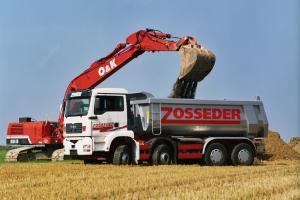Eurostat and the Modal Split
Every year, the EU commission publishes a pocketbook with basic statistical data about the EU traffic system: "Energy and Transport in Figures". The 2004 issue is available for download on the EU server. For comparison purposes, the pocketbook also lists a few USA figures. (At least, I'm not able to imagine any other reason than "comparison", if some USA data is given in an EU handbook.) Unfortunately, some comparison figures are unusable for comparison, leading into major error margins.
USA freight traffic ton kilometers¹ are provided under 3.4.16 in the pocket book. Similar data about the EU(15) is listed under 3.2.3. As a result, many readers assume, that USA railfreight achieves a modal share (without sea transport) of 43%, while EU (15) railfreight holds 13%. Both figures are true, but comparing them creates false data with a huge error margin.
The reason is given in a footnote to the USA figures: "Road" freight in the US statistics means "intercity truck traffic", excluding all the delivery and construction site traffic. There might be good reasons for this decision. Perhaps, Americans are convinced, that the low importance of railroads, shipping and pipelines in neighbourhood or local traffic seriously restricts the learning effect of a comparison to all of the trucking.
But the question, who uses the best statistical methods, is unimportant here. The decisive point is, that the data is unusable for any attempt at EU – USA comparison.
Thanks to the little footnote, the data in the EU pocketbook isn't wrong. It's just useless, and will lead any citizen without good knowledge of possible traps in statistical data into wrong conclusions.
This author does not participate in the fashionable hobby of EU bureaucracy bashing. Many of those, who work for this administration, do a thorough job. "Energy and Transport in Figures" is no example for that, unfortunately.
¹ More detailed USA data is available on the Bureau of Transportation Statistics server.

